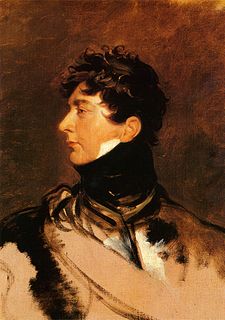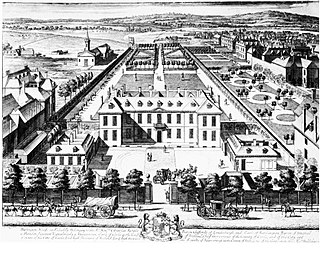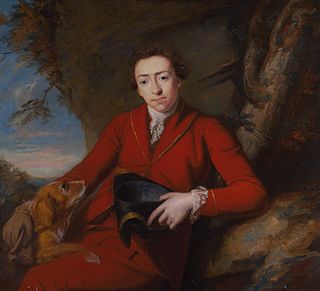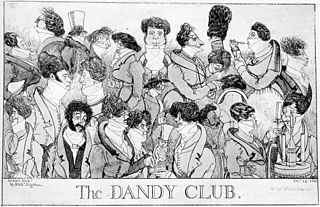 W
WThe Regency in the United Kingdom of Great Britain and Ireland was a period at the end of the Georgian era, when King George III was deemed unfit to rule due to his illness, and his son ruled as his proxy, as prince regent. Upon George III's death in 1820, the prince regent became King George IV. The term Regency can refer to various stretches of time; some are longer than the decade of the formal Regency, which lasted from 1811 to 1820. The period from 1795 to 1837, which includes the latter part of George III's reign and the reigns of his sons George IV and William IV, is sometimes regarded as the Regency era, characterised by distinctive trends in British architecture, literature, fashions, politics, and culture.
 W
WThe Regency in the United Kingdom of Great Britain and Ireland was a period at the end of the Georgian era, when King George III was deemed unfit to rule due to his illness, and his son ruled as his proxy, as prince regent. Upon George III's death in 1820, the prince regent became King George IV. The term Regency can refer to various stretches of time; some are longer than the decade of the formal Regency, which lasted from 1811 to 1820. The period from 1795 to 1837, which includes the latter part of George III's reign and the reigns of his sons George IV and William IV, is sometimes regarded as the Regency era, characterised by distinctive trends in British architecture, literature, fashions, politics, and culture.
 W
WAlmack's was the name of a number of establishments and social clubs in London between the 18th and 20th centuries. Two of the social clubs would go on to fame as Brooks's and Boodle's. Almack's most famous establishment was based in assembly rooms on King Street, St James's, and was one of a limited number of upper class mixed-sex public social venues in the British capital in an era when the most important venues for the hectic social season were the grand houses of the aristocracy. The site of the club, Almack's Assembly Rooms or Willis's Rooms, has become retrospectively interchangeable with the club, though for much of the club's lifetime, the rooms offered a variety of other entertainments with no connection to the club.
 W
WThe Argyll Rooms was an entertainment venue on Little Argyll Street, Regent Street, London, England, opened in 1806. It was rebuilt in 1818 due to the design of Regent Street. It burned down in 1830, but was rebuilt, but later mainly occupied by shops. It was the home of the Philharmonic Society of London from its inception in 1813 until 1830.
 W
WBoodle's is a London gentlemen's club, founded in January 1762, at No. 50 Pall Mall, London, by Lord Shelburne, the future Marquess of Lansdowne and Prime Minister of the United Kingdom.
 W
WBrooks's is a gentlemen's club in St James's Street, London. It is one of the oldest and most exclusive gentlemen's clubs in London.
 W
WThe Burlington Estate is an area in Mayfair to the north of Piccadilly in the West End of London, England. It was developed in the 18th century. The estate was owned by the Anglo-Irish Boyle dynasty, Earls of Burlington, in particular Richard, 3rd Earl of Burlington and 4th Earl of Cork (1694-1753).
 W
WCaroline of Brunswick was queen consort of the United Kingdom and Hanover as the wife of King George IV from 29 January 1820 until her death in 1821. She was the Princess of Wales from 1795 to 1820.
 W
WCork Street is a street in Mayfair in the West End of London, England, with many contemporary art galleries, and was previously associated with the tailoring industry. It is part of the Burlington Estate, which was developed from the 18th century.
 W
WCumberland Market was a London market between Regent's Park and Euston railway station. It was built in the early 19th century and was London's hay and straw market for a hundred years until the late 1920s. An arm of the Regent's Canal was built to the market. The market was surrounded by modest housing, and in the early 20th century became an artistic community. The original houses were demolished during and after the Second World War and it is now a housing estate, known as Regent's Park Estate.
 W
WRegency dance is the term for historical dances of the period ranging roughly from 1790 to 1825. Some feel that the popular use of the term "Regency dance" is not technically correct, as the actual English Regency lasted only from 1811 until 1820. However, the term "Regency" has been used to refer to a much broader period than the historical Regency for a very long time, particularly in areas such as the history of art and architecture, literature, and clothing. This is because there are consistencies of style over this period which make having a single term useful.
 W
WGeorge Dance the younger, RA was an English architect and surveyor as well as a portraitist.
 W
WMaria Anne Fitzherbert was a longtime companion of George IV of the United Kingdom before he became king. In 1785, they secretly contracted a marriage that was invalid under English civil law because his father, King George III, had not consented to it. She was a Roman Catholic so, had the marriage been approved and valid, George would have lost his place in the line of succession, because the law at the time forbade Catholics or spouses of Catholics from becoming monarch. Before marrying the prince, Fitzherbert had been twice widowed. Her nephew-in-law from her first marriage, Cardinal Weld, persuaded Pope Pius VII to declare the marriage sacramentally valid.
 W
WFleet Prison was a notorious London prison by the side of the River Fleet. The prison was built in 1197, was rebuilt several times, and was in use until 1844. It was demolished in 1846.
 W
WGeorge IV was King of the United Kingdom of Great Britain and Ireland and King of Hanover from the death of his father, King George III, on 29 January 1820 until his own death ten years later. From 1811 until his accession, he served as regent during his father's final mental illness.
 W
WJohn Jackson was a celebrated English pugilist of the late 18th century. He became the 17th bare-knuckle boxing champion of all England on 15 April 1795, when he defeated Daniel Mendoza.
 W
WSir John Lade, 2nd Baronet was a prominent member of Regency society, notable as an owner and breeder of racehorses, as an accomplished driver, associated with Samuel Johnson's circle, and one of George IV's closest friends. At the time he caused some sensation both because of the extent of his debts and the scandal attached to his marriage to his wife Letitia, a woman who was generally supposed to have been previously the mistress of both the executed highwayman John Rann and the Prince Regent's brother, the Duke of York.
 W
WThe London Beer Flood was an accident at Meux & Co's Horse Shoe Brewery, London, on 17 October 1814. It took place when one of the 22-foot-tall (6.7 m) wooden vats of fermenting porter burst. The pressure of the escaping liquid dislodged the valve of another vessel and destroyed several large barrels: between 128,000 and 323,000 imperial gallons of beer were released in total.
 W
WMarble Arch is a 19th-century white marble-faced triumphal arch in London, England. The structure was designed by John Nash in 1827 to be the state entrance to the cour d'honneur of Buckingham Palace; it stood near the site of what is today the three-bayed, central projection of the palace containing the well-known balcony. In 1851, on the initiative of architect and urban planner Decimus Burton, a one-time pupil of John Nash, it was relocated to its current site. Following the widening of Park Lane in the early 1960s, the site became a large traffic island at the junction of Oxford Street, Park Lane and Edgware Road, isolating the arch. Admiralty Arch, Holyhead in Wales is a similar arch, also cut off from public access, at the other end of the A5.
 W
WRegent Street is a major shopping street in the West End of London. It is named after George, the Prince Regent and was laid out under the direction of the architect John Nash and James Burton. It runs from Waterloo Place in St James's at the southern end, through Piccadilly Circus and Oxford Circus, to All Souls Church. From there Langham Place and Portland Place continue the route to Regent's Park.
 W
WThe Royal Mews is a mews of the British Royal Family. In London these stables and stable-hands quarters have occupied two main sites in turn: the north side of Charing Cross and since the 1820s, to make way for Trafalgar Square, part of the grounds of Buckingham Palace. The site has display royal carriages and motor vehicles. It is open to the public for much of the year.
 W
WThe Church of St. John the Baptist, Hoxton, usually known as St. John's Hoxton, is an English urban Anglican parish church in the Hoxton area of Shoreditch, within the London Borough of Hackney.
 W
WThe social season, or season, refers to the traditional annual period when it is customary for members of a social elite of society to hold balls, dinner parties and charity events. Until World War I, it was also the appropriate time to be resident in the city rather than in the country in order to attend such events.
 W
WThe Theatre Royal Haymarket is a West End theatre on Haymarket in the City of Westminster which dates back to 1720, making it the third-oldest London playhouse still in use. Samuel Foote acquired the lease in 1747, and in 1766 he gained a royal patent to play legitimate drama in the summer months. The original building was a little further north in the same street. It has been at its current location since 1821, when it was redesigned by John Nash. It is a Grade I listed building, with a seating capacity of 888. The freehold of the theatre is owned by the Crown Estate.
 W
WTimbuctoo is the fictional account of the illiterate American sailor Robert Adams' true life journey to Timbuktu, and his arrival in Regency London. The novel is written by Anglo-Afghan author, filmmaker, and adventurer Tahir Shah. It was released on July 5, 2012 by Secretum Mundi Publishing.
 W
WTrafalgar Square is a public square in the City of Westminster, Central London, established in the early 19th century around the area formerly known as Charing Cross. The Square's name commemorates the Battle of Trafalgar, the British naval victory in the Napoleonic Wars over France and Spain that took place on 21 October 1805 off the coast of Cape Trafalgar.
 W
WWatier's Club was a gentlemen's Club established in 1807 and disbanded in 1819. It was located at 81 Piccadilly on the corner of Bolton Street in west London.
 W
WWhite's is a gentlemen's club in St James's, London.